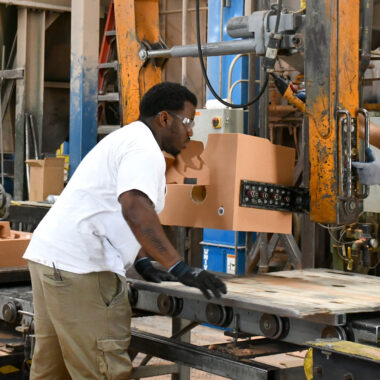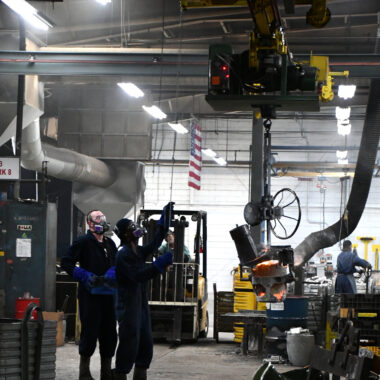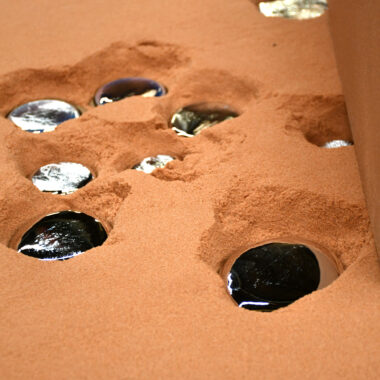The Ultimate Aluminum Spreading Handbook: Step-by-Step Instructions for Success

Safety Safety Measures for Aluminum Spreading

Additionally, keeping a neat workspace devoid of clutter can protect against tripping threats and assist in the movement of employees during casting procedures. aluminum casting illinois. Correct training in taking care of molten light weight aluminum and operating casting equipment is important to lessen the risk of mishaps and injuries. Normal equipment upkeep and inspection ought to be performed to identify and correct any kind of potential security threats quickly
Establishing Up Your Light Weight Aluminum Casting Work Area
Establishing a reliable and secure work space for light weight aluminum spreading is important for guaranteeing smooth operations and decreasing potential dangers. Prior to establishing your work area, make sure that it is well-ventilated to avoid the accumulation of hazardous fumes generated throughout the spreading process. Organize your tools and equipment in a logical fashion, keeping them within easy reach but likewise maintaining clear paths for movement around the work area. It is necessary to have a designated area for each stage of the casting process, such as pattern production, mold and mildew prep work, and steel putting, to simplify operations and protect against cross-contamination. In addition, make certain that your office is outfitted with fire extinguishers and emergency situation safety and security devices, and that all employees are learnt appropriate safety and security treatments. Use heat-resistant materials for work surface areas and floor covering to stop damages and accidents due to high temperature levels. By carefully establishing and preparing up your aluminum casting work area, you can develop a productive environment that focuses on safety and security and effectiveness.
Choosing the Right Light Weight Aluminum Alloy
To make sure optimum casting leads to your efficient and safety-focused workspace, selecting the suitable light weight aluminum alloy is vital. Various aluminum alloys use varied attributes such as toughness, sturdiness, warmth resistance, and machinability. The selection of alloy depends on the specific requirements of your spreading project.
One typically made use of aluminum alloy for casting is A356. This alloy displays superb fluidity, making it suitable for elaborate castings with slim walls. A356 additionally has excellent corrosion resistance and mechanical residential or commercial properties, making it appropriate for a large range of applications.
If higher stamina is needed, 7075 aluminum alloy is a popular option. Recognized for its high strength-to-weight proportion, 7075 is frequently utilized in applications where stamina is crucial, such as aerospace components.
For jobs that include high-temperature settings, 319 light weight aluminum alloy is an excellent alternative due to its remarkable thermal conductivity and resistance to thermal fracturing.

Step-by-Step Aluminum Casting Refine
Starting the aluminum casting procedure includes thorough prep work and adherence to look at here an accurate series of actions to ensure the production of high-quality castings. This pattern is then used to create the mold and mildew, which can be made of materials like sand or plaster.
After reaching the wanted temperature level, the liquified aluminum is poured into the mold and mildew dental caries. This action needs care and accuracy to avoid moved here problems in the final spreading.
Throughout the whole procedure, careful surveillance and quality assurance procedures ought to be implemented to make certain the last aluminum spreading satisfies the needed specifications and criteria.
Tips for Perfecting Your Spreading Method
In refining your aluminum spreading technique, thorough focus to detail and adherence to specific steps are paramount to making certain the production of high-grade spreadings. One important idea for perfecting your spreading method is to meticulously prepare the mold and guarantee it is clean and effectively coated with a launch representative to help in the very easy removal of the spreading. Additionally, preserving the aluminum at the appropriate temperature level throughout the casting process is important for accomplishing optimum flow and minimizing the threat of problems. An additional suggestion is to put the liquified aluminum slowly and continuously into the mold to stop air entrapment and make certain a smooth fill. It is likewise vital to allow adequate time for the light weight aluminum to strengthen entirely before removing the casting from the mold and mildew. Ultimately, inspecting the spreading for any type of blemishes and making necessary modifications to the process will help you boost and perfect your aluminum casting technique in time.
Verdict
Finally, following proper safety and security precautions, setting up an ideal work area, selecting the right light weight aluminum alloy, and diligently complying with the detailed spreading process are important for successful light weight aluminum casting. By taking notice of these vital elements and including ideas to refine your strategy, you can achieve superb results in your light weight aluminum casting jobs.
From safety and security precautions to developing casting strategies, this manual offers as a beacon of understanding for those venturing into the globe of aluminum i thought about this spreading.
Commencing the aluminum spreading process entails precise prep work and adherence to an exact collection of steps to make sure the production of high-grade spreadings.In refining your aluminum spreading strategy, precise interest to information and adherence to precise actions are vital to ensuring the production of high-grade castings. One essential idea for refining your spreading strategy is to carefully prepare the mold and ensure it is clean and appropriately covered with a release agent to help in the very easy removal of the casting. Examining the spreading for any blemishes and making necessary adjustments to the process will certainly assist you improve and ideal your light weight aluminum casting method over time.